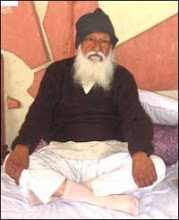/topics/public-infrastructure-and-services
Public Infrastructure and Services
On the book shelf: Interlinking of Rivers in India, Issues and Concerns
Posted on 31 Aug, 2008 10:26 AM Key Features: Reviews the risks of inter-basin water transfers warns of critical disadvantages with India's proposed ILR plan offers viable less-risky solutions for water resource development. Inter-basin water transfers are complex human interventions on natural systems that can have profound adverse as well as beneficial social, economic and environmental implications. India's plan to interlink its rivers (ILR) and to transfer water may, according to one set of views, generate positive benefits through improved and expanded irrigation and may also contribute to flood and drought hazards mitigation for India, although the magnitudes are debatable. However, there are opposing views, in the context of India itself, that the interlinking plan is economically prohibitive, fraught with uncertainties, and has potential for disastrous and irreversible adverse after-effects. Water deficit can be reduced through improved water management without large scale engineering interventions. Moreover many of the rivers involved, particularly in the Himalayan component, are international and, therefore, the scheme has major implications for other riparians. Indeed, the planned transfer of water from the Ganges and Brahmaputra rivers will adversely impact Bangladesh socially, economically and environmentally---unless arrangements are made to maintain historical flows, which is unlikely to be feasible.
Key Features: Reviews the risks of inter-basin water transfers warns of critical disadvantages with India's proposed ILR plan offers viable less-risky solutions for water resource development. Inter-basin water transfers are complex human interventions on natural systems that can have profound adverse as well as beneficial social, economic and environmental implications. India's plan to interlink its rivers (ILR) and to transfer water may, according to one set of views, generate positive benefits through improved and expanded irrigation and may also contribute to flood and drought hazards mitigation for India, although the magnitudes are debatable. However, there are opposing views, in the context of India itself, that the interlinking plan is economically prohibitive, fraught with uncertainties, and has potential for disastrous and irreversible adverse after-effects. Water deficit can be reduced through improved water management without large scale engineering interventions. Moreover many of the rivers involved, particularly in the Himalayan component, are international and, therefore, the scheme has major implications for other riparians. Indeed, the planned transfer of water from the Ganges and Brahmaputra rivers will adversely impact Bangladesh socially, economically and environmentally---unless arrangements are made to maintain historical flows, which is unlikely to be feasible.
Prof.G. D. Agrawal's satyagraha against the construction of dams on the Bhagirathi River
Posted on 17 May, 2008 09:08 AM
Pained by the unrelenting destruction of the Ganga river, especially by a series of dams in its upper reaches, Dr G.D. Agrawal, India's pre-eminent environmental quality scientist and a legendary Professor (and HoD) of Civil & Environmental Engineering at IIT-Kanpur. (Access:Biography Sketch Here) has decided to go on a fast-unto-death to oppose its continuing desecration. His conviction that we are staring at an unprecedented ecological and cultural catastrophe comes from his powerfully logical mind. Critique on proposed dams on Bhagirathi River. Access here: Critique on Dams
Microfinance for safe drinking water-ACCESS & HUL partnership
Posted on 21 Mar, 2008 12:12 AMDrop by drop ACCESS & HUL in Base of Pyramid Partnership for Safe Drinking Water for Rural Poor:
Yakalakshmi lives in Nekkunda village, Telengana region in Andhra Pradesh with her husband and two children. Though she has water piped to her house by the village panchayat, her entire family fell ill for a month last monsoon season by drinking water directly from the tap. "We all got high fever and severe diarrhea", she says, "we had to spend around Rs. 4000 on health care, which was very difficult for us". So when she got the opportunity this January to buy an effective water purifier through her Self Help Group (SHG) on an installment basis she was one of the first to sign up. Yakalakshmi is just one of the beneficiaries of a unique tie-up between ACCESS Development Services, a microfinance technical services non-profit organization, and Hindustan Unilever Limited, one of the country's largest producers of fast-moving consumer goods, to provide safe drinking water to rural poor. "Most of these villages have piped water or boreholes", says Padma, Project Coordinator at a local NGO, PEACE, "the problem is that tests by UNICEF in this district show that up to 70 percent of these sources are contaminated."The contamination gets even worse during the rainy season, especially due to poor sanitation and waste-management practices.
Gastro-enteritis rears its head due to contaminated water in Bangalore
Posted on 30 Jan, 2008 01:46 AMThere is a spurt of gastro-enteritis in the city today. Residents think that it is the contaminated mains supply from the BWSSB that is the source of the gastroenteritis. The Bangalore water supply and Sewerage Board thinks it is water bought by residents from the private water tankers that is the cause but then seems to change its mind.
"Bagmati Calling" : Dharna by villagers demanding rehabilitation
Posted on 16 Jan, 2008 08:58 AMThe Bagmati Calling : I am reporting from the south bank of the Bagmati near Benipur in Muzaffarpur district of Bihar.
Statement on groundwater from SANDRP
Posted on 12 Sep, 2007 07:34 AMGroundwater - India's Water Lifeline needs urgent intervention
Govt is non serious about the crisis
ICT applications for socio-economic development of farmers
Posted on 20 Mar, 2007 11:32 AMNandini and I attended the C-DAC ICT for Socio-Economic Development conference on 11th,12th and 13th of this month in Bangalore. Primarily we were interested in spreading awareness about the Portal among the attendees. Following are some notes from there: Overall I thought the conference was very good. There was a lot of energy and interest and several good initiatives, and many of the speakers came across as smart and committed.





